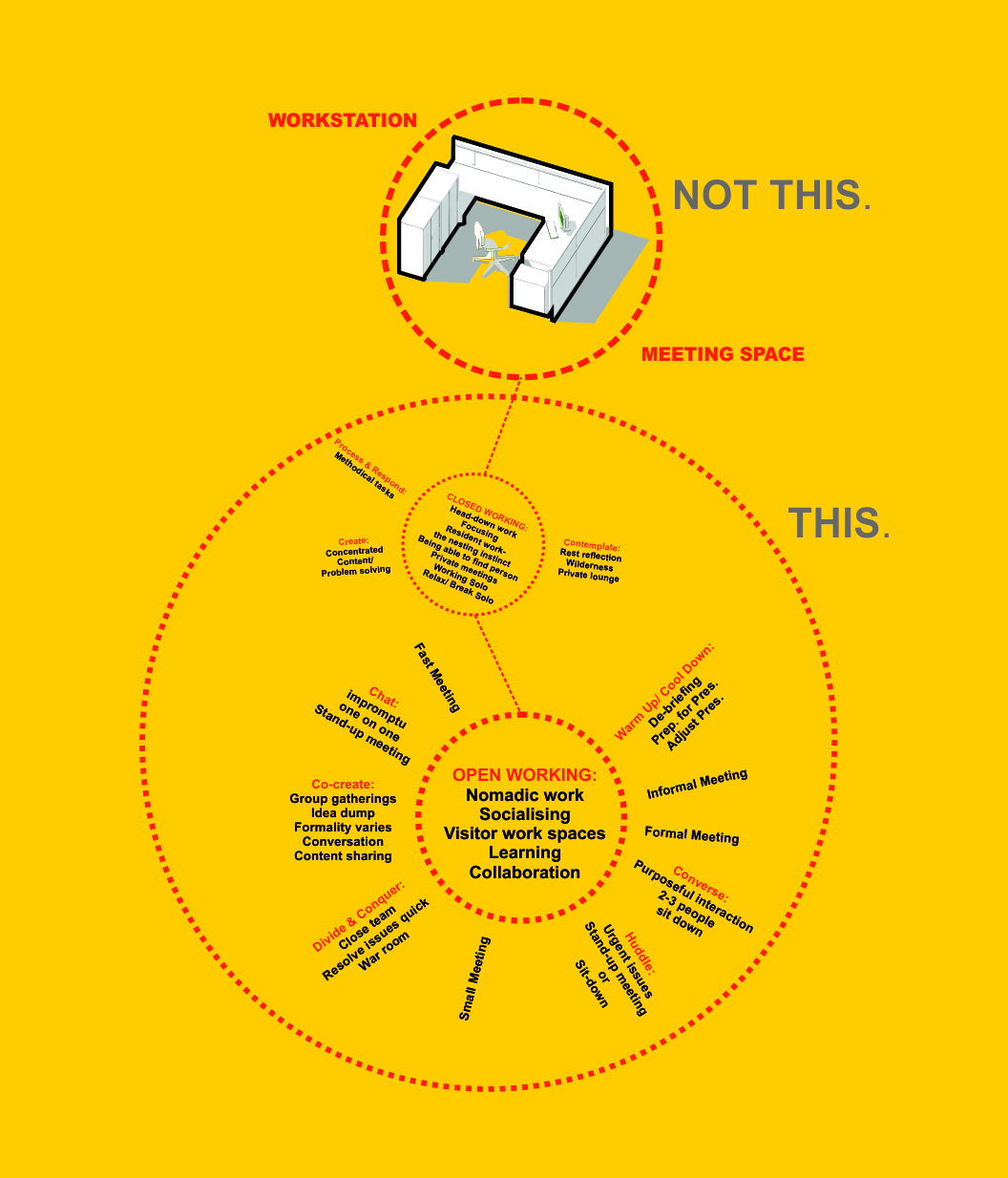Instead of focusing on what a workplace should look like, with token beanbags and Astroturf carpets, this guide decodes how an ideal office space should work, and translates that into a series of evergreen principles that can be used in your own projects. The guide tells you why you might want to put the beanbags into your office in the first place…
In most of the world today, white-collar workers are doing less and less routine, rule-based work. Accounting, financial analysis, and much of computer programming have all now become easy to outsource, and fairly easy to automate. Software can do it faster. Low-cost providers can do it cheaper. For this reason, innovative problem-solving skills are viewed as the core of the future economy and the work people will do going forward in time. When employees sit chained to their desks, quietly and industriously going about their business, not moving around, not interacting with each other, an office is not functioning as it should. That’s because innovation, the heart of the knowledge economy, is fundamentally social. Ideas arise as much out of casual conversations as they do out of formal meetings.
More precisely, as one study after another has demonstrated, the best ideas in any workplace arise out of casual contacts among different groups within the same company. If a company is designing a “gadget”, for example, it is unlikely that a breakthrough idea is going to come from someone else on the gadget team; after all, the other team members are blinkered by day-to-day demands. Someone from outside the company isn’t going to be a help either. A person like that doesn’t know enough about your particular gadgets to have a truly useful idea. The most useful insights are likely to come from someone in customer service, who hears first-hand what gadget customers have to say, or from someone in marketing, who has wrestled with the problem of how to explain gadgets to new users, or from someone who used to work on gadgets a few years back and whose work on another product has given him a fresh perspective. Innovation comes from the interactions of people at a comfortable distance from one another, neither too close nor too far. This is why, quite apart from the matter of logistics and efficiency, companies have offices to begin with. They go to the trouble of gathering their employees under one roof because they want the gadget designers to bump into the people in marketing, and the guy who moved to another department a few years back.
The catch is that getting people in an office to bump into people from another department is not as easy as it looks. Here, we will show you how… Download the full PDF guide, it has high quality information and smart tactics that can be used to create great workplaces.



One thought on “Read this if you want to create great workplaces.”
Comments are closed.